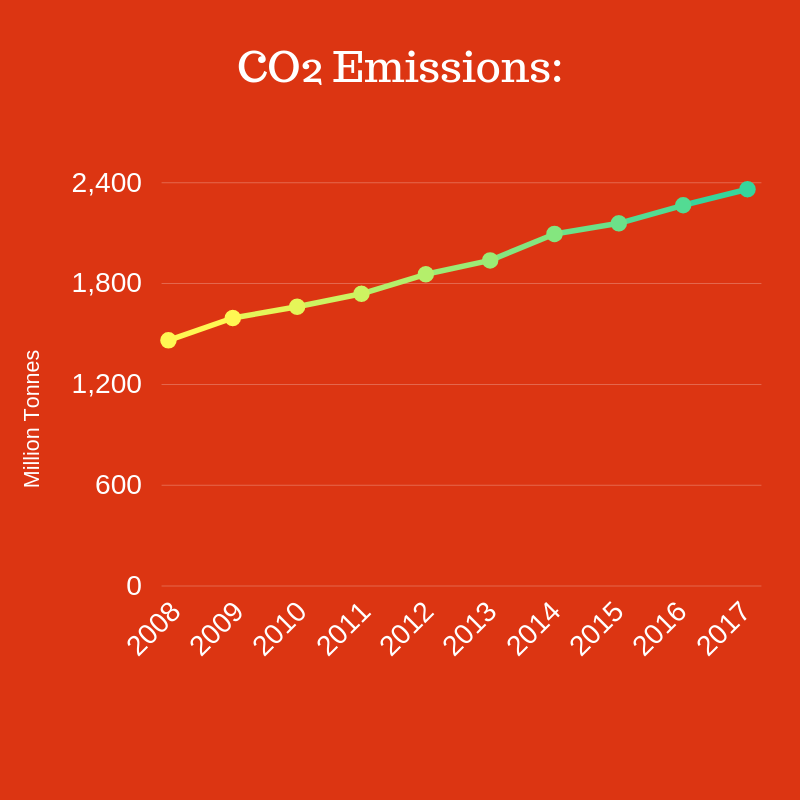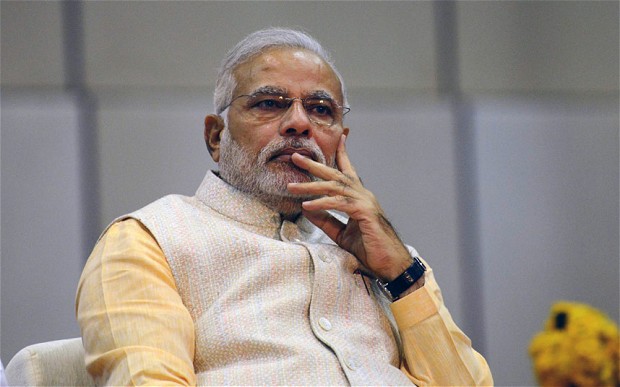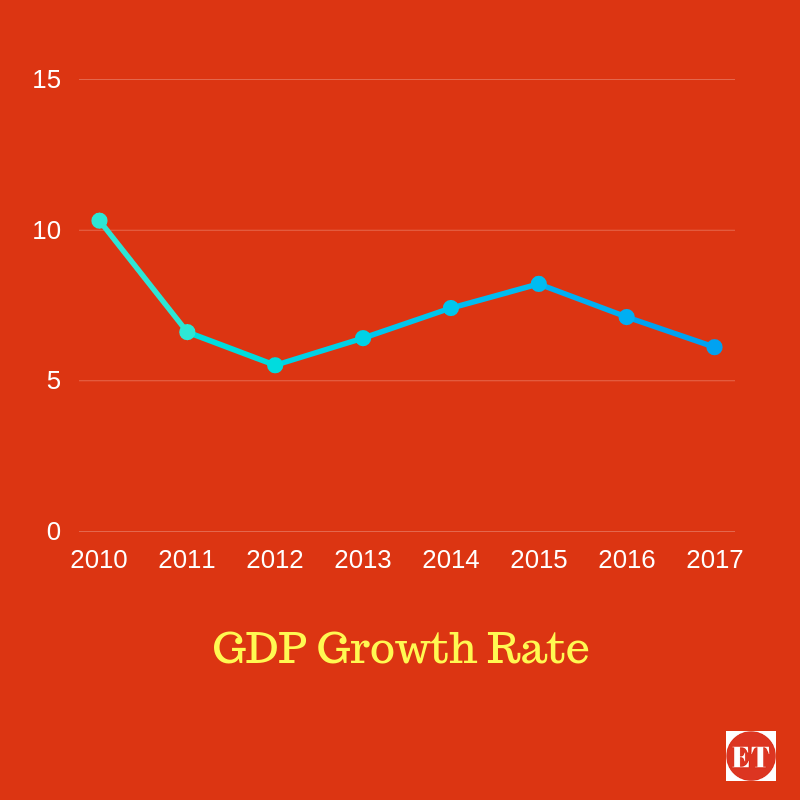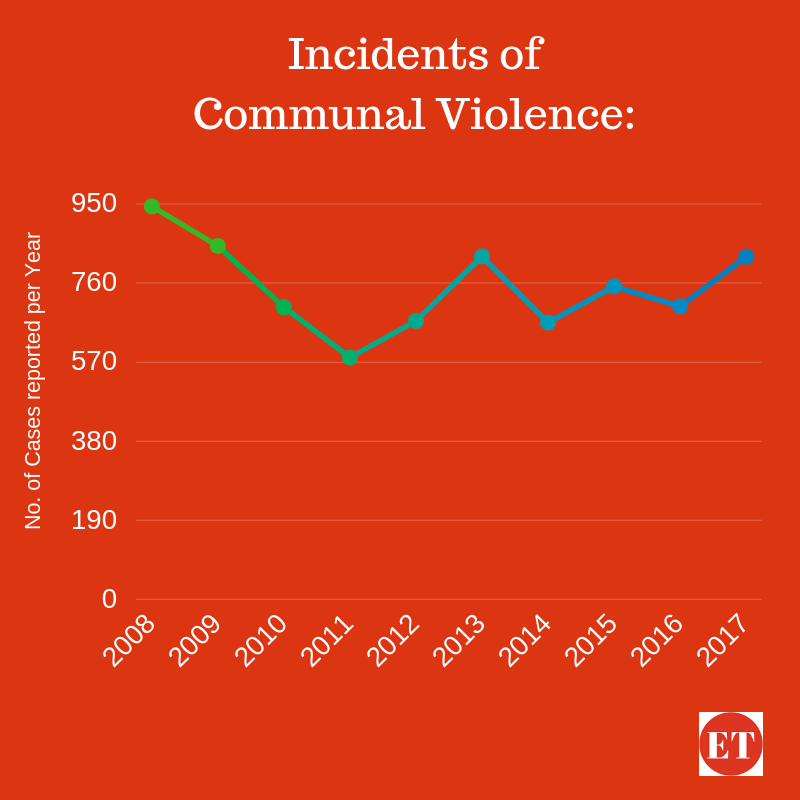The Modi government came into power more than four years ago and has had ample time to put to action the policies and “acche din” they promised. These past four years can give us a picture of what to expect if they are re-elected in 2019. Election campaigning off-late has become just another excuse for political parties to spend copious amounts of money on plastering big leaders’ faces across billboards, getting the public to chant catchy slogans and sledging on the other parties’ leaders, so much so that we are seeing the decline of logical discourse. It is important for citizens to consider facts before deciding political allegiances, so here are some facts to consider before deciding whether or not to bring back NDA in 2019:
1. India became the sixth largest economy in the world:
In 2017, India surpassed France to become the world’s sixth largest economy, with a GDP of 2.597 trillion. GDP grew tremendously– in 2015, India had an 8.2% growth rate.
Such high growth did not come at a public cost: Gross national income (GNI) per capita has been growing steadily as well. From 2011 to 2014, the last four UPA years, the per capita GNI grew only from $4,600 to $5,610, but from 2014 to 2017, per capita GNI has grown from $5,610 to $7,060.

2. India was no longer home to the world’s largest number of poor people:
All the capitalism-oriented growth policies do not seem to have left the working classes behind– in 2018, the World Poverty Clock declared that India was no longer home to the world’s largest number of poor people. The number of poor people, i.e those living under $1.90 per day, has fallen from 306 million in 2011 to about 70 million in 2018. The World Poverty Clock attributes this tremendous improvement to high economic growth, which the Modi government has promised and delivered.
3. Demonetisation was implemented in an attempt to unearth black money:
On 8th November 2016, Indians were told that their currency notes of Rs. 500 and Rs. 1000 would no longer be legal tender. This has been PM Modi’s most controversial move yet. As a cash-driven economy, the short-term effects of demonetisation are undeniable as citizens spent a good chunk of the initial days of demonetisation in bank and ATM queues, cursing the government as they swatted mosquitos in frustration over the new policy. Hope did remain that all this frustration was the price we paid for a black money-free economy, but many black money holders found ways to launder it. Daily wage workers could not be paid, and the informal economy came to a halt. GDP growth too fell, from 8.2% in 2015, to 7.1% in 2016, to 6.1% in 2017. Growth rates are expected to recover this financial year, but we will only know when the numbers come in next year. Downsides considered, demonetisation did add 5.6 million taxpayers in 2017, compared to only 2.2 million in 2016 (before demonetisation), which increased government revenue. It also formalised the economy, by encouraging greater use of banking facilities and credit as opposed to cash. Since it’s too early to comment on the long-term effects of demonetisation, these are the facts we have, and whether the benefits have outweighed the costs is up to each individual to determine for themselves.

4. GST was implemented to simplify the taxation system:
The idea of a single Goods and Services Tax (GST) replacing and simplifying indirect taxes has existed since the Vajpayee days but was only implemented by PM Modi, effective from 1st July 2017. GST in India consists of five broad slabs: 0%, 5%, 12%, 18%, and 28%. Items are put under these slabs based on if they are necessities or luxuries: for example, unbranded foodgrains come under 0% GST, and perfumes come under the 18% slab. Since the single tax eliminates the need for various levels of bureaucracy, it is expected to bring down the cost of operations and opportunity for corruption. Many have complained that the new process of filing for GST returns is complex and has increased the cost of operating businesses, but this is a temporary problem that will ease down as people get used to the new taxation system. People have pointed out the absurdness of how certain items have been taxes, for instance, products used by people with disabilities such as motorised wheelchairs, braille printers, etc. that were earlier not taxed are being taxed under GST. Insurance is also being taxed more heavily. As a system, GST is efficient, and it’s too early to debate its long-term effects, and it has not seen any major controversies thus far.

5. Modi received the Champion of the Earth Award from the UN:
The UN confers the Champion of the Earth Award, the UN’s highest environmental honour, every year to leaders who propel monumental change that helps save the environment. This year, PM Modi was honoured with the award alongside French President Emmanuel Macron in the Policy Leadership category, for championing the International Solar Alliance and promoting new areas of levels of cooperation on environmental action, and for Modi’s unprecedented pledge to eliminate all single-use plastic by 2022. This topic has remained relatively untouched by mainstream media. The international community largely believes that India is doing its part to combat climate change. It is generally agreed upon that developed, more established, older economies such as the US and Europe are the ones who recklessly polluted the planet during their industrialisation phase and brought the world to this sorry state of affairs, so a greater onus to save the planet lies on them rather than emerging, developing economies like India. India is on the path of development alongside sustainability, as the use of battery-powered cars and solar energy are increasing. The rate of growth of India’s carbon dioxide emissions has also come down in 2017– from 2006 to 2016, the growth rate was 6%, but the growth rate in 2017 was only 4.4%. India still has a long way to go, as most North American economies are seeing negative growth, but for the level of development India has achieved, the international community agrees that India is doing its part.

6. India’s Ease of Doing Business rank jumps 23 places to rank 77:
The Doing Business project provides a measure of business regulations and their enforcement across 190 countries. It takes into consideration factors such as property registration, contract enforcement, electricity procurement, insolvency resolution, tax payment, etc. to come up with reports for ease of Doing Business in each country, and global rankings. In the 2019 Doing Business report released earlier this year, India ranks at #77, a great improvement as it has climbed up 23 spots in just a year. India is South Asia’s top-ranked economy and is the fifth largest improver overall. Some reforms that can be attributed to the Modi government, that have streamlined the ease of doing business in India include the implementation of GST which has made the registration process faster, amendments to the insolvency law which give secured creditors absolute priority over other claims within insolvency proceedings, and reduced corporate income tax.
7. Communal violence under NDA:
There have been a number of figures thrown around the media, about the rise of communal violence under NDA, attributing this increased violence to the BJP’s pro-Hindutva outlook, antagonising Modi and his government for propagating violence on communal lines. While it is undesirable for a secular nation to have parties asking for votes on religious lines, we cannot immediately attribute communal violence to one party or leader. It is very easy to twist numbers to weave a tale one want to tell, so it is important to take a bird’s eye view. Many popular news websites have claimed that with 822 cases of communal violence in 2017, the number has increased by 28% in three years. There is no statistical explanation anywhere for how the growth rate is 28%– in 2014, there were 664 cases of communal violence, which puts the real number at 23.79%, which is also not great. There is ample evidence to prove incidents of communal violence have increased, but this is a trend that has been going on for decades, so this cannot be called an NDA phenomenon. The number of incidents of communal violence fluctuates up and down, numbers seemingly unaffected by the change in governments. Communal violence stems from a deep hatred for a particular community, and the tendency to take to violence to express one’s discontent over another’s mere existence is not something that can be trivially attributed to one leader or party, it comes from a place of such deep-seated communal chauvinism that cannot come from just one party being in power for a few years.
8. Aadhaar came under scrutiny:
Aadhaar is a means of unique identification for citizens. The need for it came at a time when the only means of identification was a ration card, which was given to families and not individuals, so there was no proper system for citizens’ identification. Aadhaar was introduced in 2009 by the Manmohan Singh-led UPA, but it has come under scrutiny only after Modi government came to power, especially regarding the security of such large amounts of data. Various reports came forward claiming that the database in which the data of millions of Indians was stored, including their phone numbers, bank account numbers and biometric information was unsafe, and hackers could easily obtain access to this information. The government has addressed this issue but only said that access to this information cannot do any harm to a person, failing to address the danger of having millions’ personal information out there. The Supreme Court has held that Aadhaar cannot be made compulsory, so those with concerns about data privacy can simply refrain from getting Aadhaar, so the right to privacy argument cannot be made here, but those who got their Aadhaar cards before this controversy began brewing are still at risk. What these databases contain is very sensitive information, and among all this controversy, there has been no promise from the government to strengthen security. Having millions of citizens’ private data out there for any hacker to obtain hasn’t caused any major crime today, but it could in the future, and it is important for the government to recognise the power of big data, and act fast. So far, Aadhaar security has not caused any major problems for anyone, but the power of big data is still scary, and the government simply doesn’t see it.
9. Full Electrification:
In 2018, PM Modi claimed that every single village in India had been electrified. This claim came under fire from media, as there were still plenty of households left to be electrified. Technically, under the Deendayal Upadhyaya Gram Jyoti Yojana, only 10% of households in a village need to use electricity for a village to be considered electrified, so Modi was not false, but claiming full electrification was a steep claim that was bound to invite criticism. India’s villages still have a long way to go, and having 10% of homes in villages electrified is not good enough that the Modi government can pat itself on the back and rest– there is still a long way to go.


